- Albalagh.net
- AnswersToFatawa
- Arij Canada
- Askimam.org
- Askmufti.co.za
- AskOurImam.com
- CouncilofUlama.co.za
- Darulfiqh.com
- Darulifta Azaadville
- Darulifta Deoband Waqf
- Darulifta-Deoband.com
- Daruliftaa.com
- DaruliftaaMW.com
- DaruliftaaZambia.com
- DarulIftaBirmingham
- Darulihsan.com
- DarulUloomTT.net
- Fatwa-TT.com
- Fatwa.org.au
- FatwaCentre.org
- HadithAnswers.com
- IslamicPortal.co.uk
- IslamicSolutions.org
- Jamia Binoria
- Mahmoodiyah
- Mathabah.org
- Muftionline.co.za
- Muftisays.com
- MuslimaCoaching.com
- Seekersguidance.org
- ShariahBoard.org
- Tafseer Raheemi
- TheMufti.com
- ZamzamAcademy.com
- BinBayyah.net
- Darul Iftaa Jordan
- Shafiifiqh.com
- HanbaliDisciples.com
- TheHanbaliMadhhab.com
- Ask Question
- Lailatul Qadr

Home » Hanafi Fiqh » Mathabah.org » Shortening and Combining Prayers During Travel and Pilgrimage

Related Q&A
- Re: May I shorten my prayer when traveling within the city?
- What Are the Methods for Combining (Jam') and Shortening (Qasr) Prayer for Travel? [Shafi'i School]
- Shortened and or Combined Ritual Prayer During Travel
- Shortening the prayers when one doesn't know the destination
- When Is a Person Considered a Traveler Who Can Shorten Their Prayers?
- Travel that Allows Missing Jumu`ah
Shortening and Combining Prayers During Travel and Pilgrimage
Answered by shaykh yūsuf badāt.
How do we perform ṣal āh (ritual prayers) during Ḥajj and ʿUmrah, shortened and combined or complete?
In the sacred journey, pilgrims are usually at the blessed lands for a short period of time. This usually entails the rules of prayer during travel.
Shortening Ritual Prayers
During travel one is to shorten the four unit far ḍ (mandatory) prayers to two. Shortening the prayers in this manner is w ājib (necessary) according to the Ḥanaf ī school and sunnah mu ʾakkadah (an emphasised prophetic practice) according to other schools or jurisprudence.
“And when you travel throughout the land, there is no blame upon you for shortening the prayer.” (Qurʾān 4:101) Ibn ʿOmar ( may All āh be pleased with him ) said, “I accompanied the Prophet ( peace and blessings upon him ) in travel, he never exceeded two units of prayer. Abū Bakr, ʿOmar and ʿOthmān ( may All āh be pleased with them ) also did the same.” (Bukhārī, Muslim)
There is an opinion in the Sh āf ʿīe and Ḥanbal ī schools that the traveler may opt to offer the complete four, despite being in journey. Although this is not preferred. (See: Kitāb Fiqh ʿAlā Al-Madhāhib Al-Arbaʿah, Iʿilā Al-Sunan)
Conditions to Shorten Ritual Prayers
The conditions for one to shorten prayers due to travel are as follows:
One must intend and also travel a distance of at least 77 km going to the destination away from home.
One must stay at the destination for less than 15 days (4 days according to Shāfʿīe , M ālik ī and Ḥanbalī schools). Otherwise, shortening would not be permitted.
The Shāfʿīe and Ḥanbalī schools stipulate that shortening of prayers are only applicable if the journey is for a positive purpose and not a journey to commit sin or evil. The Ḥanaf ī and M ālik ī schools state that the traveler will shorten prayers regardless of the purpose and or objective of the journey. (See: Kitāb Fiqh ʿAlā Al-Madhāhib Al-Arbaʿah)
Joining Prayers
During travel, apart from shortening, one may also combine two prayers, meaning Dhuhr and ʿAṣr and or joining Maghrib and ʿEshā together. Combining can take place in two forms. Taqd īm/ Haq īqatan and or Ta ʾkh īr/ Ṣuratan .
Taqd īm/ Haqīqatan refers to performing two prayers in one ṣal āh timing. For example, Dhuhr and ʿAṣr are offered in Dhuhr time. Ta ʾkh īr/ Ṣuratan refers to offering the first prayer delayed to its final moments and then praying the next prayer in its beginning time. Scholars of the Shāfʿīe , M ālik ī and Ḥanbalī schools are of the view that both forms of combining are permitted during travel.
Imams Ibn Sirīn, Ḥasan, Nakhaʿī and Abū Ḥanīfah ( may All āh’s mercy be with them ) state that combining two prayers during one ṣal āh timing is only permitted in ʿArafah and Muzdalifah. As for travel, one is to combine using the Jam ʾ Ta ʾkh īr/ Ṣuratan method. (See: Al-Muḥīṭ Al-Burhānī, Al-Mughnī, Iʿilā Al-Sunan)
“The Prophet ( peace and blessings upon him ) would offer prayers at their fixed timing except in Muzdalifah and ʿArafah.” (Nasaʾī, Āthār Al-Sunan) “In travel, the Prophet ( peace and blessings upon him ) would perform Dhuhr delayed and ʿAṣr early, [he would also] delay Maghrib and expedite ʿEshā.” (Ṭaḥāwī)
Praying Behind the Local Resident Imam
Shortening and or combining prayers during travel will take place when performing ritual mandatory prayers individually or together with a congregation of travellers. However, when one is offering prayers in congregation behind a local resident imam, one will perform full prayers with the imam. (Iʿilā Al-Sunan)
“Mūsā bin Salamah ( may All āh be pleased with him ) says, “We were with Ibn ʿAbbās (a resident) in Makkah. I said, “When we are with you in prayer, we offer the four [with you]. When we are praying individually we pray two.” IbnʿAbbās said, “That is the sunnah (prophetic way).”” (Al-Talkhīṣ Al-Ḥabīr, Musnad Aḥmad)
Optional Sunnah and Nafl Prayers During Travel
One should note that there is no shortening in sunnah and nafl (optional) units of prayer. During travel, if one has time, one may perform the optional sunnah and nafl prayers.
It is reported the Prophet ( peace and blessings upon him ) performed optional prayers during travel before Fajr and Dhuhr, as well as after Maghrib. (See: Bukhārī, Trimidhī)
Prayers on a Flight
Every effort should be made to plan prayer where one fulfills all requirements of the ṣal āh , including facing the qiblah and standing. If one is scheduled on such a flight where a prayer or more cannot be offered on time before departing nor after landing, due to the entire prayer timing being on flight, then one should pray on board. One must find a suitable place on the flight where one can stand and face the qibla. If for some reason, there is no possibility what so ever to stand and pray fulfilling the requirements of ritual prayer, one may pray on their seat gesturing the ruk ūʾ (bowing) and suj ūd (prostration). This would be the method of praying in such a circumstance, even if the direction is not towards qibla. This is due to the necessity, otherwise this is not permitted in general circumstances for mandatory [ far ḍh ] ritual prayers.
“Be dutiful to the Almighty as much as possible.” (Qurʿān: 64:16) “When I instruct you to any ritual act, execute it to the best of your ability.” (Ṣaḥīḥ Muslim) “Perform prayer standing, if you are unable, then sitting, if you are unable then on your side.” (Bukhārī, Nasaʾī) Ibn ʿOmar ( may All āh be pleased with him ) said, “The Prophet ( peace and blessings upon him ) was asked about ritual prayer on a ship. He replied, “Perform prayer on it, in a standing position as long as you do not fear collapsing [and drowning].” (Mustadrak, Jāmiʾ Al-Saghīr) Yaʾlā bin Murrah ( may All āh’s mercy be with him ) reports from his grandfather who was on a journey once with the Prophet ( peace and blessings upon him ). The time for mandatory prayer was near to expiry during a heavy storm that caused floods and excessive wetness. Everyone performed the prayers with the Prophet ( peace and blessings upon him ) by the means of gestures making the prostration more declined than the bowing. Everyone remained on their conveyances. (See: Tirmidhī)
And Allāh Knows Best
This answer was collected from Mathabah.org. It’s an Islamic educational institute based in Canada. The questions are generally answered by Sheikh Yusuf Badat and Sheikh Omar Subedar.
Read answers with similar topics:
Random Q&A
What is the reason for the rise in crime, what is the majority opinion of ulama about this du’a :”allahumma inni ‘abduk ibn ‘abdik ibnu amatik nasiyati bi yadik madin fiya hukmuk ‘adlun fiya qada’uk as’aluka bikulli ismin huwa lak…”, swearing one’s mother, carrying a small copy of the qur’an, few years back i had taken loan from friends for my mother’s hajj. i have questions regarding, is it permissible for a hanafi to perform salah behind a shaafi imam in shaafi time, more answers….
- The Nutmeg Spice in Food
- The Ruling of Using Hair Extensions in Islam
- Protocol of Invoking Peace and Blessings to the Prophet at His Tomb
- Gifting Property with Conditions
- Dealing with Forex, Stocks and Shares
- Eleven Facts on the Finality of Prophethood and Messengership
Latest Q&A
- Is Makeup Allowed During Iḥrām?
- Do These Actions Formulate Disbelief?
- The Status of a Job Acquired with False Certification
- Can a Ḥanafī Resident Pray Behind a Shāfi’īe Traveller?
- Is it Permissible to Allow Wheelchairs in a Masjid?
- Is an Entry Fee at a Charity Event Considered Charity?
Indexed Websites
Privacy overview.

Special Events
Salah During Travel (Qasr)
Praying 5 times a day is an obligation upon Muslims. However, Allah has allowed His servants to shorten their Salah during travel.
1- Why Should We Follow Qasr Salah During Travel?
The Messenger of Allah (S.A.W.) said,
“Verily, Allah loves for you to take His concessions , just as he dislikes you to be disobedient.” (Musnad Ahmad: 5832)
The shortening of prayers is mentioned in the Quran and is a confirmed Sunnah of Prophet Muhammad (S.A.W.):
“And when you travel throughout the land, there is no blame upon you for the shortening Prayer” (Quran 4:101, An-Nasai: 457)
Hence, for travelers, it is permissible to shorten those Prayers that consist of 4 Rakat to only 2 Rakat (i.e. only Fardh Prayer of Dhuhr, Asr & Isha Salah).
2- Opinion of Different Fiqh:
According to Imam Shafii (R.A.) and Imam Ahmad bin Hanbal (R.A.), Reduction in the Prayer is not obligatory but merely optional. However, it is better to shorten it.
Imam Abu Hanifah (R.A.) considers ‘Reduction in Prayer'’ as obligatory (Wajib) during travel .
3- Conditions for Qasr:
Travelling Distance
According to Imam Abu Hanifa, the minimum required distance for a person to be considered a traveler is when he or she intends to travel for 48 miles (80 kilometers approx) from his/her Waṭan-e-Aṣli (Original Hometown).
Imam Shafi'i, Imam Ahmad bin Hanbal and Imam Malik fixed this distance at 55 miles approx (88 km approx).
Shortening of the prayers commences once a person leaves the city limits and ceases when they re-enter the city limits.
Period/Time
There is considerable scholarly disagreement on this matter from three days to four and to fifteen days.
Traveler-status is the intention to stay at the place of arrival for a period of:
Less than Fifteen (15) days [Hanafi]
Less than Four (4) days [Hanbali, Maliki and Shafii] - (Days of arrival and departure are not included)
4- How to do Taqseer (shortening of Prayers):
During travel, only Salah with 4 Rakat Fardh is to be shortened, i.e. Dhuhr, Asr & Isha. Travelers should offer 2 Rakat instead of 4 Rakat of the mentioned Salahs.
However, 2 Rakat Fardh of Fajr and 3 Rakat of Maghrib Salah must be offered in full as you cannot cut 2 or 3 Rakat Fardh Salah in half.
When on a journey, the Prophet (S.A.W.) used to offer, without fail, 2 Sunnah Rakat of Fajr Prayer and 3 Rakat Witr with Isha Prayer . So these two should be offered even during traveling.
Remember that these rules are only for a person who is traveling and offering individual Salah. If the traveler is praying in congregation then he must follow the Imam and offer the full Salah.
The Quran, written centuries ago, contains profound hints at future discoveries. It includes scientific facts that surpass the knowledge of anyone who lived in the 7th century. This serves as compelling evidence of the divine nature of the Quran.
This year, Nisf Shaban (Shab-e-Barat) will start after the sunset of Tuesday, March 7th, 2023.
Isra wal Meraj is a journey of faith and revelation that the Prophet Muhammad (S.A.W.) took from Makkah to Jerusalem and then to the 7th Heaven.
Isra and Miraj (The Night Journey) is miraculous journey that Prophet Muhammad (S.A.W.) took in one night from Makkah to Bait al-Maqdas and then an ascension to the heavens.
* user name and email shouldn't be left empty

May 8, 2024
A Digital Archive of Islamic Knowledge
The Hanafi Stance on Combining Prayers During Travel

Why don’t Hanafis combine prayers, when there are authentic hadiths about it?
In the Name of Allah the Inspirer of truth.
This issue is a major one between the fiqhi schools. The Hanafis have judged all the narrations on this issue to be based on the method of “apparent combining” ( Jam’ al-Suri ) not “real combining” ( Jam’ al-Haqiqi ). What this means is that since we are told to make every prayer on time, and there are hadiths of Ibn Mas’ud (R) which clarify that the Prophet, sallallahu `alayhi wa sallam , never combined the prayers together (by taking a prayer out of its time) except in ‘Arafa and Muzdalifa during the [Hajj] pilgrimage.
The following, which is an excerpt the from the Fiqh al-Imam (third edition) currently under publication, [1] may be useful in understanding the hadiths on this issue:
From the Chapter on “Combining Two Prayers”:
‘Abdullah ibn Mas’ud (R) relates:
“I never observed the Messenger of Allah sallallahu `alayhi wa sallam perform any prayer out of its time except at Muzdalifa. He combined Maghrib and ‘Isha at Muzdalifa.” ( Sahih al-Bukhari 1:227, Sahih Muslim 1:417, Sharh Ma’ani ‘l-athar 1:164)
Another narration of Ibn Mas’ud (R) states:
“The Messenger of Allah combined two prayers whilst on a journey. He would combine Maghrib and ‘Isha by delaying Maghrib until just before its expiry time, and performing ‘Isha immediately as its time entered.” ( Musannaf Ibn Abi Shayba 2:458)
‘A’isha narrates: “The Messenger of Allah, whilst on a journey, would delay Zuhr and perform ‘Asr early and would delay Maghrib and perform ‘Isha early (i.e. perform each prayer in its own time).” ( Sharh Ma’ani ‘l-athar 1:164, Musannaf Ibn Abi Shayba 2:457)
Ibn ‘Abbas (R) narrates:
“I performed eight rak’ats together (four of Zuhr and four of ‘Asr) and seven rak’ats together (three of Maghrib and four of ‘Isha) with the Messenger of Allah.” (One of the narrators says,) “I asked Abu ‘l-Sha’tha’, ‘I assume he delayed Zuhr (to the end of its time) and performed ‘Asr as soon as it entered, and delayed Maghrib (likewise) and performed ‘Isha early.’ He replied, ‘I also think the same.’ ” ( Sahih Muslim 1:246, Musannaf Ibn Abi Shayba 2: 456)
This hadith of Sahih Muslim is very clear about the exact description of combining two prayers. The method described by the narrator is Jam’ al-suri .
Imam Abu Dawud has transmitted the following:
The Mu’adhdhin of ‘Abdullah ibn ‘Umar (R) informed him it was time for prayer. Ibn ‘Umar instructed him to continue on the journey. When the red of sunset ( shafq ahmar ) had nearly disappeared, he got of from his mount and performed Maghrib, and then he waited until the red had completely disappeared and performed Isha. He then said, “Whenever the Messenger of Allah (S) was in a hurry for some reason, he would do just as I have done.” ( Sunan Abi Dawud 1:178)
As we can see, the method of combining mentioned in the above hadiths is none other than that of jam’ al-suri . It is an agreed upon method which nobody has any argument with. How can there be an objection to two prayers being performed together in a way that does not cause them to be performed either before their stipulated time or after it? Undoubtedly, this is the safest method of combining two prayers, and would be the most suitable way to explain the hadiths on combining.
It is also common knowledge that the Fajr prayer should not to be performed before its time or intentionally delayed beyond it. Similarly, other prayers should not be performed out of their stipulated times either, especially not while considering it to be sunna . This indicates that the sunna method of combining two prayers is jam’ al-suri , as has also been substantiated through the Qur’an and hadiths. This is the Hanafi opinion in this issue.
If it was permissible to practice jam’ al-haqiqi in the event of travel or illness, etc. then why is it confined to some prayers only? Why is it not permissible to perform all the prayers of the day together in the morning before departing on a journey? The reason for this is quite simple. The practice of combining mentioned in the hadiths is not to be taken as jam al-haqiqi , but as jam al-suri wherein each prayer remains in its own time, but are performed one after another.
And Allah knows best.
Wasallaam Abdurrahman ibn Yusuf
[1] The book Fiqh al-Imam by Mufti Abdur Rahman ibn Yusuf has already been published by White Thread Press.
Courtesy of ZamZam Academy
Share this:
- Click to print (Opens in new window)
- Click to email a link to a friend (Opens in new window)
- Click to share on Pocket (Opens in new window)
- Click to share on Twitter (Opens in new window)
- Click to share on WhatsApp (Opens in new window)
- Click to share on Telegram (Opens in new window)
- Click to share on Facebook (Opens in new window)
- Click to share on Reddit (Opens in new window)
- Click to share on Tumblr (Opens in new window)
- Click to share on Pinterest (Opens in new window)
Published in Fiqh , Prayer and Rulings
- combining prayers
- fiqh of travel
- hanafi fiqh
- shortening prayer
Comments are closed.
Lessons in Hanafi Fiqh
This Weblog is a series of lessons and articles in fiqh according to the school of Abu Hanifah. They are not necessarily published in the order that they should be read.
Tuesday, January 04, 2005
- The prayer of the traveler
The distance that makes one a traveler
- The travelling by which rules change (fasting Ramadan, prayer subset numbers, permissability of female travel, duty of Friday and Eid prayers, duty of slaughtering in Eid, the period for which one may wipe the khuff) is the one for which one intends (i.e. starts travelling wanting) to travel the distance of 3 complete days and nights at the average pace of a person on foot or riding a camel. Today this is estimated by about 98 kilometers.
- Travel by sea is not estimated according to travel by land. Instead, one estimates according to normal conditions of travel by sea.
- The sinful and the obedient (to Allah) in his traveling is the same with regards to its license.
The description of the travelers prayer
- The obligatory prayers of the traveller with 4 subsets are reduced to 2 subsets ONLY (not optional).
- If a traveller prayed 4 subsets and sat (the time it takes to say the tashahhud) after the first pair, then the first pair become the obligatory prayer and the second an optional prayer. However, he has done something bad by delaying the salaam of the obligatory prayer.
- If a traveller prayed 4 subsets and did not sit (the time it takes to say the tashahhud) after the first pair, then his obligatory prayer is invalid. This is because he effectively entered an optional prayer before he completed the obligation.
- The one who missed a prayer while traveling, and makes it up after settling, prays it by 2 subsets. The one who missed a prayer while settled, and makes it up while traveling, prays in 4 subsets.
Group prayer with travelers
- If a traveller entered as a follower behind a settled person in a 4 subset prayer, in the time of that prayer, then he competes 4 subsets.
- If a traveller entered (note that it is the time of entry that matters) behind a settled person in a 4 subset prayer, after the time of the prayer has expired, then his prayer is invalid. This is because it is now making up a prayer for him and he is supposed to make up 2 subsets, not 4.
- If a traveller leads settlers, then he says the salaam after 2 subsets while the others complete 4. They complete the 3rd and 4th subsets without reciting, but must recite in any subsets that they did not catch.
- It is a virtue for the leader who is a traveller to say "complete your prayers, because we are travellers!" after having said the salaam.
Start- and end-points of being a traveler
- If the traveller went beyond the buildings of his place of settlement, then he starts praying 2 subsets.
- After exiting the town, he remains a traveller until he intends to settle in a town or village for 15 days or more. If he intended less, he will remain a traveller.
- Settlement in the middle of the desert is not valid for ending the state of being a traveller.
- If the traveller entered a town with the firm intention of leaving "tomorrow or after tomorrow", and never intended to stay for 15 days, then he shortens his prayer, even if years pass by.
- If the muslim troops entered the warzone (non-muslim land) and intended to settle, they still shorten their prayer, even if they besieged a town or a fortress. This is because they are in the state between victory thus settlement and defeat thus retreat, so their place is not a place for settlement yet. The same is the case if they besieged (muslim) rebels against the Khaliifah in muslim lands outside the cities or at sea.
- The intention of settlment for herders living in tents is valid, and is not invalidated merely by moving from one pasture to another.
- If the traveller enters his home town, then he must complete all 4 subsets, even if he did not intend to stay.
- Whoever had a hometown but emigrated to another town, remains a traveller if he should travel through his original hometown. This is provided that it is not also his hometown. The basic rule is that one's original hometown is invalidated as a "hometown" by taking another place as ones home, but not by mere travelling or settling in another town.
- The place of settling is invalidated by settling somewhere else (because the new place is its equal) or by travelling (because it is contradictory to settling) or by reaching one's hometown.
- If the traveller intended to settle in "Makkah and Mina" for 15 days, then he keeps shortening his prayer. Exempted here is if he intended to stay all nights in one of them, because settlement has to do with were you stay at night, so in this case he becomes a settler by entering the place he intends to stay at night.
How to Pray When Travelling
Publication : 28-01-2006
Views : 277335
I am going abroad for one month. Let me know the easiest way of doing the prayers during this period.
Summary of answer
Contents Related
When to shorten prayer while traveling
- Can you join prayers while travelling?
Praise be to Allah.
If you have resolved to stay in the place to which you are travelling for more than four days, then you come under the same ruling as a resident from the moment you arrive there, so you have to do what the residents do, i.e., offer the prayers in full, and it is not permissible for you to shorten them .
You may shorten the prayers during the journey , but when you reach the place you should offer the prayers in full, because you come under the same ruling as a resident.
It says in Fatawa al-Lajnah al-Daimah (8/99):
“The kind of travel for which the concession of travel is prescribed is that which is regarded as travel according to custom, and the distance is approximately eighty kilometers. Whoever travels this distance or more may avail himself of the concessions for travellers, such as wiping over his socks for three days and two nights, joining and shortening prayers, and not fasting during Ramadan. If this traveller intends to stay in a place for more than four days, then he should not avail himself of the concessions for travellers. If he intends to stay there for four days or less, then he may avail himself of the concessions for travellers. If a traveller stays in a place but does not know when he will finish his business and cannot state a certain length of time for his stay, then he may avail himself of the concessions for travelling even if he stays for a long time. It makes no difference whether he travels by land or by sea.”
Can you join prayers while travelling?
With regard to joining prayers , it is permissible for a traveller to join Zhuhr and ‘Asr, and Maghrib and ‘Isha, at the time of the earlier or later prayer, depending on what is easiest for him. But it is better for him not to do that unless it is difficult for him to offer every prayer on time.
Based on that, you can join two prayers together during the journey, but when you reach the place where you intend to stay for a month, then you should offer every prayer on time.
You should remember that prayer in congregation is obligatory for travellers as well as others. So try to pray in congregation in the mosque .
And Allah knows best.
Was this answer helpful? No Yes
Source: Islam Q&A
Similar Topics
Prayer in congregation is obligatory for both travellers and non-travellers
Should a traveller offer the prayers in shortened form in his house or pray in congregation in the mosque?
Is Combining Prayers when Travelling Permissible?
Ruling on Shortening Prayers when Travelling
Is Shortening Prayers while Travelling Sunnah?
share Question
You can ask your question on the website via this link: https://islamqa.info/en/ask
Log in Create an account
Password should contain small, capital letter and at least 8 characters long
Can't log in to your account?
If you do not have an account, you can click the button below to create one
If you have an account, log in
Create new account Log in
Reset Username or Password
Send feedback.
number of rakats For traveller
Posted by Ahmed Abdulla | Prayer
A common question which is often asked while travelling is (1) Can I shorten the prayer while travelling, (2) if yes, how many rakats should I pray for Salah?
We have answered (1) in detail and you can see the discussion on Shortening and combining prayer while travelling .
The summary:
- Yes it is both mentioned in the Quran and is the Sunnah of the Prophet, peace and blessings upon him, to offer the shortened prayer while travelling.
- The conditions are you are travelling outside your city or beyond 88km and you plan your stay to be less than fifteen days (according to Hanafi Fiqh). If for unforeseen circumstance, you are compelled and stuck there you can continue offering the Qasr salat as long as your unable to return. This can be weeks, months or years.
With regard to the number of rakats offered for Salah we will answer it here.
It was narrated that ‘Umar said: “The prayer for jumu’ah is two rak’ahs, and for Al-Fitr is two rak’ahs, and for An-Nahr is two rak’ahs, and for traveling is two rak’ahs, complete and not shortened, on the tongue of the Prophet (ﷺ).” Grade: Sahih (Darussalam) Reference: Sunan an-Nasa’i 1440
It was narrated that ‘Umar said: “The prayer while traveling is two Rak’ah, and Friday is two Rak’ah, and ‘Eid is two Rak’ah. They are complete and are not shortened, as told by Muhammad (ﷺ).” Grade: Sahih (Darussalam) Sunan Ibn Majah
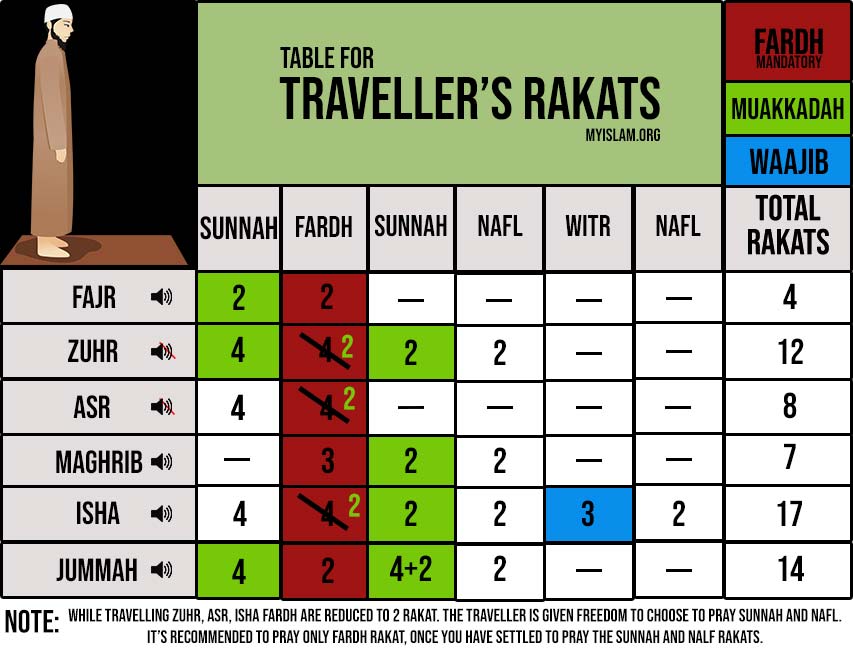
Number of Rakats While Travelling:
Fajr – 2 Fardh Zuhr – 2 Fardh Asr – 2 Fardh Maghrib – 3 Fardh Isha – 2 Fardh
With regards to the Sunnah and Nafl salat, the travellers had the choice as to whether or not this will be offered. It is advised once the traveller has settled that he should pray the Sunnah and Nafl prayers.
Some scholars are under the opinion that Fajr sunnah and Witr prayer should be prayed even during the stay or travel as it’s strongly emphasized. There is no shortening of the Nafl, Maghrib or Fajr Salat.
Inshallah this clears up any confusion you may have had. Please leave a comment below if this helped or if you believe we have made a mistake anywhere.
Related Posts

How To Pray Witr Salah
March 30, 2020
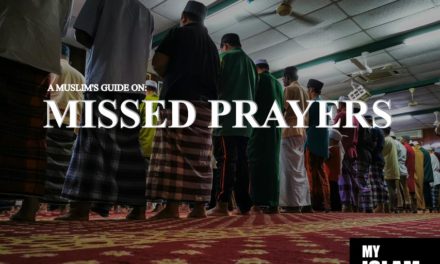
What Is Punishment For Missing Salah? How Can I Make up For Years of Missed prayers?
April 9, 2020
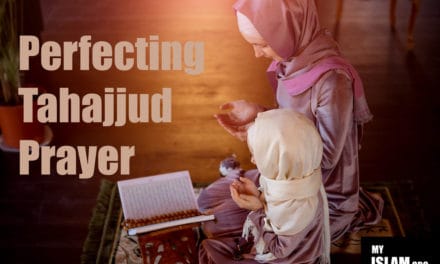
How To Perfect Your Tahajjud Salah (Night Prayer)
April 28, 2020
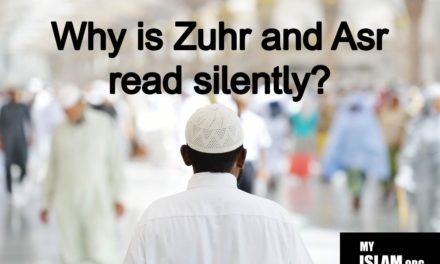
Why is Zuhr and Asr Read Silently?
April 20, 2020
19 Comments
Jazakallah very helpful.
Jazaqah llahu khaira, I used to pray all the raqaa as the way their when I’m traveling but ,,rightnow I understand the number of raqaa And if possible may you please create the group for whatsup because in my side my phone can’t access an email
Jazak Allah Khair, very useful information
https://www.youtube.com/watch?v=P7RHDzp_kQw Please write “in shaa Allah” properly. Reference is the link above.
Asalamuwalaikum, 2 questions please 1) i regularly go to visit my inlaws who live 100km away from my home. I usually visit for 1 week. Whilst there can i shorten my prayers as i am considered a traveller? 2) can i join my prayers for example asr with with zuhr and isha + witr with my maghrib salah? Is this permissable? I appreciate your comments and thoughts.
I travel for a month can I conflict may prayer
Assalaamu alaikum,
I read this article while I was traveling by plane. Prayed Isha with thus guidance.
Jazākallahu khairuh
Very useful information. JK!!
Mashaallah thank you
: Assalamualaikum wa Rahamatullahi wa barakatuh.Iam working 140km to my hometown(Nellore) .There I am staying 30 days and above .Then I come back to my home for3 or 4 days and go back to my job.At my job place(medarametla,Ongole) I prayed full rakat of zohar, asar, and isha.But now my job place was changed to more 40km(chilakaluripet).There I am working for 3 or 4 days and comeback to original job place (Medarametla)her I am working for 2 or 3 days and go back to previous work place (chilakaluripet).This will happened continuously. How I perform my namaz in above mentioned places is in Medarametla and in Chilakaluripet.Now I am praying khasar namaz in two places. And when to my hometown I pray full namaz.please kindly give me answer as quickly as possible.
If every almost two weeks or three weeks I travel to my mother’s home am I supposed to shorten my Salah for almost 3days or just because that’s where I was born it’s like my home am also supposed to pray all the 4 rakats in full thanks
Jazakallah khayran very useful.
Salaams . Why should we pray nafl and sunnah as a traveller , when we shortened our fardh salaah and fardh is more imp than sunnah and nafl.
Just need to ask for how many jumma rakats while travelling
When praying in masjid When not praying in masjid
Informative!
We can observe travel rakkah for how many days?
is when you travel more than 50 MILE
Jazakhallah very useful to know how many rakaats to pray If you’re a traveller
I’m traveling for 21 days overseas. I already know it is more than 15 days. During travel to destination I made the kasr (shortened) but upon arrival I started as normal thiugh I was exhausted and it was difficult to pray the normal length with sunnahs and nafils (i.e, complete namaz). Could I have done the shortened prayer for 15 of the 21 days or I’m correct in starting off the complete prayers upon arrival. I realize Allah has offered flexibility and ease in our madhhab, but I’m unclear about this matter.
Leave a reply Cancel reply
Your email address will not be published. Required fields are marked *
Support the site?
“Take on only as much as you can do of good deeds, for the best of deeds is that which is done consistently, even if it is little.” – Sunan Ibn Majah 4240
Need more info? Read our 2023 Annual Report

Jesus Prayer Ministry
- Types of Prayer
- Benefits of Prayer
- Advanced Prayer Techniques
- Prayer Tools
- Prayer in Different Religions
- Prayer Ministry
- About Greg & Darlene
Comprehensive Guide to the Hanafi Prayer Method

- December 4, 2023
- 14 min read

The Hanafi prayer method is a specific set of steps and guidelines followed by the followers of the Hanafi school of thought during their prayers. It is crucial to understand and adhere to these nuances to ensure that prayers are performed correctly according to the Hanafi method.

Key Takeaways:
- The Hanafi prayer method involves specific steps and guidelines for performing prayers.
- It is important to raise hands parallel to the earlobes during takbir and place the right hand over the left beneath the navel.
- Reciting specific verses and surahs, performing ruku’ and sujud in a specific manner, and concluding with salaam are integral parts of the Hanafi prayer.
- Practicing the key rituals correctly is essential for a valid Hanafi prayer.
- While there are some differences for men and women, the general structure of prayer remains the same for both.
Understanding the Hanafi Method of Prayer
In the Hanafi school of thought, the method of prayer involves specific steps and guidelines that followers adhere to. It is important to grasp these nuances to perform the prayer correctly. According to the Hanafi prayer technique , there are several key elements that must be followed.
Raising Hands and Reciting Takbir
At the start of the prayer, the Hanafi method requires raising both hands parallel to the earlobes while saying the takbir, which is the declaration “Allahu Akbar” meaning “Allah is the Greatest.”
Placing Right Hand Over Left
Next, the worshipper places the right hand over the left beneath the navel. This hand positioning is an important aspect of the Hanafi prayer steps .
Reciting Verses and Surahs
The recitation of specific verses and surahs is another fundamental aspect of the Hanafi prayer guide . The recitation includes Surah Al-Fatihah, the opening chapter of the Quran , and an additional surah or three verses from any surah.
Bowing, Prostration, and Salaam
The Hanafi prayer method also emphasizes performing ruku’ (bowing) and sujud (prostration) in a specific manner. This involves reciting distinct phrases and supplications during each posture. The prayer concludes with the salaam, a greeting of peace to the right and left.
By following each step accurately and adhering to the guidelines of the Hanafi method, worshippers can perform their prayers in alignment with this school of thought.
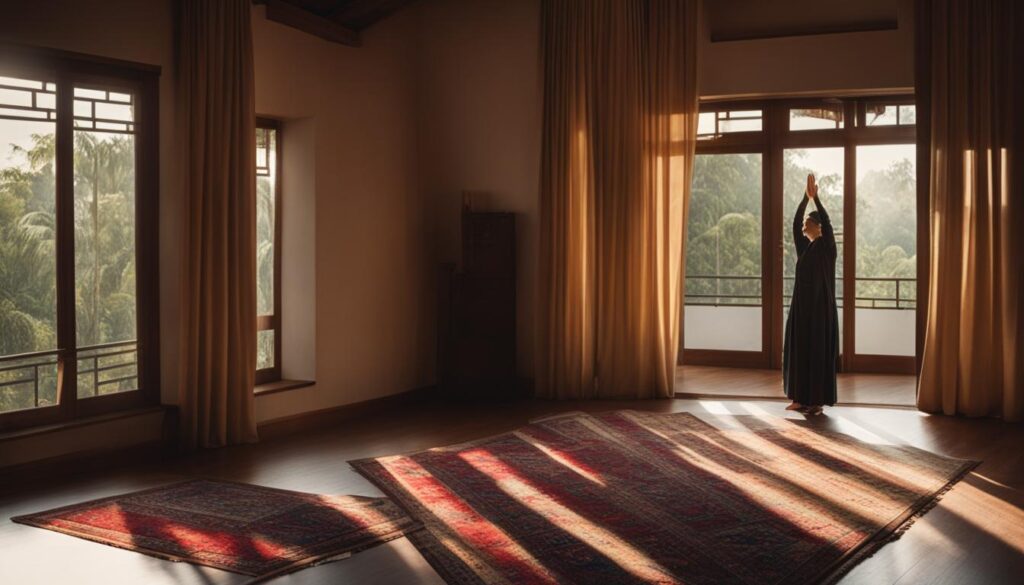
The Elements of the Hanafi Prayer Method
The Hanafi method of prayer encompasses various elements that must be followed in order to perform the prayer correctly. Each element holds its own significance and contributes to the overall spiritual experience. Understanding these elements is essential for individuals practicing the Hanafi prayer method.
Instructions and Procedure
- Reciting the Thanāʾ : The prayer begins with the praise of Allah, known as the Thanāʾ. It is a declaration of His greatness and is recited silently.
- Taʿawuzh : This involves seeking refuge in Allah from Satan before reciting the Bismillah.
- Tasmiyyah : Before reciting the first verse of the Quran, Bismillah should be pronounced. This is to seek the blessings of Allah and affirm the intention to pray.
- Recitation of Surah Fatihah and Surah : It is obligatory to recite Surah Fatihah, the opening chapter of the Quran, followed by a Surah or a minimum of three verses from any other Surah. This recitation shows respect and humility towards Allah.
- Rukuʿ and Sujud : During rukuʿ (bowing) and sujud (prostration), specific phrases and supplications should be recited. These actions symbolize submission and reverence towards Allah.
By following these instructions and procedures, individuals can perform the Hanafi prayer method with precision and devotion. Remembering the importance of each element helps create a truly meaningful prayer experience.
Table: Hanafi Prayer Elements
It must be noted that practicing the Hanafi prayer method requires adherence to the rules and guidelines set forth by the Hanafi school of thought. This ensures the prayer is performed in accordance with the teachings and traditions of the Hanafi methodology.
Performing the Hanafi prayer method not only involves the physical actions of prayer but also requires a deep sense of spirituality and devotion. The elements of this method serve as a means to connect with Allah and attain a state of tranquility and mindfulness during prayer.
By familiarizing oneself with the elements and their significance, individuals can perform the Hanafi prayer method with mindfulness and reverence, reaping the spiritual benefits of this ancient tradition.
Key Rituals in the Hanafi Prayer Method
As part of the Hanafi prayer method, there are several key rituals that should be observed. These rituals help create a meaningful and spiritually fulfilling prayer experience. Here are some of the important rituals:
The prayer begins with takbir, where the worshipper raises their hands to their ears and says “Allahu Akbar,” meaning “Allah is the Greatest.” This gesture marks the start of the prayer and serves as a reminder of the worshipper’s submission to Allah.
During ruku’, the worshipper bends from the waist, placing their hands on their knees. While in this position, they recite the phrase “Subhan Allah,” which means “Glory be to Allah.” This act of bowing symbolizes humility and the recognition of Allah’s greatness.
In sujud, the worshipper prostrates themselves with their forehead, nose, hands, knees, and toes touching the ground. While in this position, they recite “Subhan Allah,” again affirming the glory of Allah. This act of prostration represents the deepest level of submission and surrender to Allah’s will.
The prayer concludes with tashahud, where the worshipper sits and recites a specific supplication, including blessings upon the Prophet Muhammad (peace be upon him). This serves as a moment of reflection and gratitude before concluding the prayer with salaam.
By adhering to these key rituals in the Hanafi prayer method, followers can enhance their spiritual connection with Allah and experience the profound benefits of prayer .
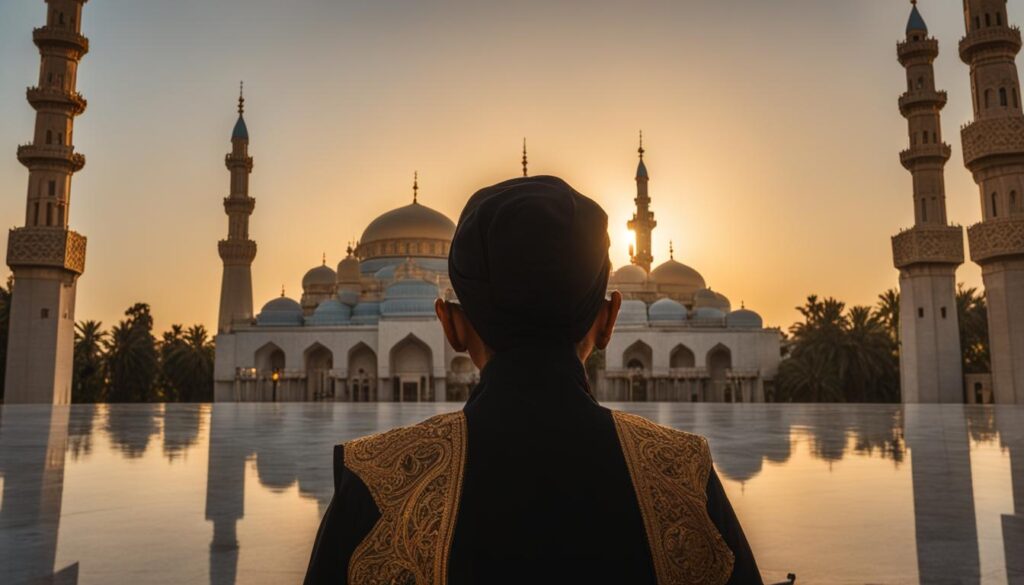
Differences in the Hanafi Prayer for Men and Women
While the general structure and steps of prayer are the same for both men and women in the Hanafi prayer method, there are some notable differences. These differences are based on the teachings and interpretations of the Hanafi school of thought, which take into account the physical and physiological differences between men and women.
One key difference is in the way women raise their hands during the takbir (saying “Allahu Akbar” to commence prayer). While men raise their hands parallel to their ears, women are advised to raise their hands to their shoulders. This is to maintain modesty and is considered a recommended practice for women in the Hanafi prayer method.
Another difference is in the postures during ruku’ (bowing) and sujud (prostration). Men are instructed to spread their fingers and keep them apart, while women are advised to keep their fingers close together and hold them in a relaxed manner. Women also place their forearms on the ground during sujud, while men rest their elbows on the ground.
It is important for women to familiarize themselves with these differences and adapt their prayer accordingly. By following the guidelines of the Hanafi school of thought, women can perform their prayers in a manner that aligns with their beliefs and traditions.
Additional Considerations in the Hanafi Prayer Method
Aside from the basic steps and rituals, there are additional guidelines and nuances that followers of the Hanafi prayer method should be aware of. These considerations help ensure that the prayers are performed correctly and in accordance with the Hanafi school of thought.
Supplications during Prayer
One important aspect of the Hanafi prayer method is the inclusion of specific supplications during the prayer. These supplications are recited at various points throughout the prayer and serve as a means of seeking blessings, mercy, and forgiveness from Allah. They can be personal or taken from the teachings of the Prophet Muhammad (peace be upon him). Examples of these supplications include seeking guidance, expressing gratitude, and asking for protection from evil. By incorporating these supplications into their prayers, followers of the Hanafi method can deepen their spiritual connection with Allah.
Recitation of Tashahud and Salat Was Salaam
In addition to the Quranic recitations, the Hanafi prayer method includes the recitation of specific prayers, known as the Tashahud and Salat Was Salaam. The Tashahud is recited while sitting in the final tashahud position of the prayer. It is a testimony of faith and a declaration of belief in the oneness of Allah and the prophethood of Muhammad (peace be upon him). Salat Was Salaam refers to the sending of blessings and peace upon the Prophet Muhammad (peace be upon him). These additional recitations hold great significance in the Hanafi prayer method and should be recited with reverence and sincerity.
Performing More than Two Rak’ahs
In certain circumstances, such as during voluntary prayers or specific prayer times, it may be necessary to perform more than the usual two rak’ahs. The Hanafi prayer method provides guidelines on how to perform these additional rak’ahs with the appropriate recitations and movements. It is important to follow these guidelines to ensure that the prayer remains valid and in accordance with the Hanafi method.
Importance of Focused Gaze in the Hanafi Prayer Method
One of the key aspects of the Hanafi prayer method is maintaining a focused gaze during the prayer. Followers are advised to keep their eyes fixed on the place of prayer and avoid distractions or wandering gazes. This practice helps enhance concentration and mindfulness during prayer.
According to the Hanafi school of thought, maintaining a focused gaze is essential for achieving a deeper connection with Allah. By directing their eyes towards the place of prayer, believers can anchor their attention and prevent their minds from wandering. This level of focus allows individuals to fully immerse themselves in the spiritual experience of prayer, increasing their mindfulness and creating a stronger connection with the divine.
The focused gaze serves as a powerful tool for concentration in the Hanafi prayer method. It helps to block out external distractions and internal thoughts, enabling believers to enter a state of tranquility and devoted worship . By maintaining a fixed gaze, individuals can bring their entire being into the present moment, cultivating a heightened awareness of their surroundings and their relationship with Allah.
Ultimately, the focused gaze in the Hanafi prayer method is not simply a physical act, but a means to attaining spiritual elevation. It creates an environment of undistracted devotion, allowing individuals to fully engage in their prayers and experience the profound benefits of connecting with Allah. By incorporating this practice into their prayer routine, followers of the Hanafi school of thought can deepen their spiritual journey and strengthen their bond with the divine.
Recommended Mannerisms in the Hanafi Prayer Method
The Hanafi prayer method not only provides specific steps and guidelines for performing prayers but also emphasizes the importance of mannerisms and etiquettes during the prayer. These recommended mannerisms help in enhancing the spiritual experience and deepening the connection with Allah. Let’s explore some of the key mannerisms and etiquettes recommended in the Hanafi prayer method.
1. Clear Intention:
Before starting the prayer, it is important to have a clear and sincere intention. The intention should be solely for the sake of Allah, seeking His pleasure, and not for any worldly gain or recognition. By purifying the intention, the prayer becomes an act of worship and devotion that brings spiritual benefits.
2. Calm and Collected Demeanor:
Throughout the prayer, it is essential to maintain a calm and collected demeanor. Avoid rushing through the prayer and perform each action with tranquility and focus. This helps in developing mindfulness and concentration, allowing for a deeper spiritual experience.
3. Raising Hands with Palms Facing the Qiblah:
When raising the hands for takbir (saying “Allahu Akbar”) at the beginning of the prayer and during other specific actions, it is recommended to raise the hands with the palms facing towards the qiblah (the direction of the Kaaba in Makkah). This signifies humility and submission to Allah’s greatness.
By practicing these recommended mannerisms and etiquettes in the Hanafi prayer method, individuals can enhance their connection with Allah and experience the true essence of prayer. It is important to remember that these mannerisms are meant to bring sincerity, focus, and humility to the worshipper, allowing for a more profound spiritual experience.
The Hanafi prayer method offers a comprehensive and structured approach to worship, providing specific steps, rituals, and guidelines for followers. By understanding and practicing this method correctly, individuals can deepen their connection with Allah and experience the spiritual benefits of prayer.
It is essential to follow the guidance of scholars and adhere to the teachings of the Hanafi school of thought to perform prayers in the Hanafi method accurately. This ensures that each step and ritual is performed in the prescribed manner, allowing for a meaningful and fulfilling prayer experience.
Through the Hanafi prayer method, individuals can cultivate mindfulness, focus, and a sense of calm during their prayers. By following the recommended mannerisms and maintaining a focused gaze, worshippers can enhance their concentration and spiritual experience.
Ultimately, the Hanafi prayer method serves as a means to establish a deep connection with Allah and seek His blessings. By practicing this method with sincerity and dedication, individuals can enrich their prayer journey and find solace in their worship.
What is the Hanafi prayer method?
The Hanafi prayer method refers to the specific steps and guidelines followed by followers of the Hanafi school of thought during their prayers.
What are the key rituals in the Hanafi prayer method?
Some key rituals in the Hanafi prayer method include raising hands for takbir, placing hands on the knees during ruku’, and reciting specific phrases in ruku’ and sujud.
Are there differences in the Hanafi prayer for men and women?
Yes, there are slight differences in the Hanafi prayer method for men and women, such as the way hands are raised during takbir and modified postures during ruku’ and sujud for women.
What additional considerations are there in the Hanafi prayer method?
The Hanafi prayer method includes guidelines for performing more than two rak’ahs, recitation of tashahud and salat was salaam, and supplications during prayer.
Why is maintaining a focused gaze important in the Hanafi prayer method?
Maintaining a focused gaze helps enhance concentration and mindfulness during prayer, allowing for a deeper spiritual experience.
What are some recommended mannerisms in the Hanafi prayer method?
Recommended mannerisms in the Hanafi prayer method include starting with a clear intention, raising hands with palms facing the qiblah, and maintaining a calm demeanor throughout the prayer.
Source Links
- https://islamqa.org/hanafi/daruliftaa-birmingham/135565/method-of-hanafi-salah/
- https://iammasjid.org/wp-content/uploads/2020/05/Salah-The-methods-of-Salah.pdf
- https://www.central-mosque.com/fiqh/Prayer.htm

Father / Grandfather / Minister / Missionary / Deacon / Elder / Author / Digital Missionary / Foster Parents / Welcome to our Family
View all posts
Related Posts:

What is the ruling on a Hanafi follower following Shafi prayer time for Asr prayer in specific cases?
In the Hanafi school of thought, the Asr prayer time is determined when the shadow of an object is twice its height. However, in the Shafi'i school of thought, the Asr prayer time is determined when the shadow of an object is equal to its height. This difference in opinion can sometimes lead to confusion for Hanafi followers, especially when they are in a situation where they need to follow the Shafi'i prayer time for Asr prayer.
The ruling on a Hanafi follower following the Shafi'i prayer time for Asr prayer in specific cases is as follows:
Traveling: If a Hanafi follower is traveling and finds themselves in a place where the majority of the local Muslim population follows the Shafi'i school of thought, it is permissible for them to follow the Shafi'i prayer time for Asr prayer. This is based on the principle of ease and avoiding unnecessary hardship [3] .
Congregational Prayer: If a Hanafi follower is praying in congregation with Shafi'i followers, it is recommended for them to follow the prayer time of the congregation. This is to maintain unity and avoid causing confusion or division among the worshippers [3] .
Time Constraints: In situations where there are time constraints or difficulties in determining the Hanafi prayer time for Asr prayer, a Hanafi follower may choose to follow the Shafi'i prayer time. This can be done as a matter of convenience and to avoid missing the prayer [3] .
It is important to note that these allowances are specific to the Hanafi school of thought and may not be applicable in other schools. It is always recommended for individuals to consult with a knowledgeable scholar or imam to seek guidance on specific cases and to ensure they are following the correct rulings according to their school of thought.
Learn more:
- The 2 asr times? | My Lord! Increase me in knowledge
- salat - Can I do prayer at this time? - Islam Stack Exchange
- Following a Madhhab and ‘Asr Time - SeekersGuidance
Continue the conversation
Explore more.
- Give Your Zakat

When Is a Person Considered a Traveler Who Can Shorten Their Prayers?
Answered by Sidi Tabraze Azam
Question: As-salamu Alaykum. I pray you’re in the best of health!
I’m a student at Uni and my question is regarding shortening prayers. First of all what is the distance that causes one to shorten his prayers? (I’m not certain of the ‘exact’ figure according to the Hanafi Madhab)
Also do I fall into the category of a traveller if I stay at university for less than a week (considering I’m renting a flat at Uni) and go home weekly (provided the distance causes me to be a traveller)?
Or will I be a traveller the few days I go home and not a traveller at the University accommodation?
I just need to clarify this because I was told (by someone who talked to a scholar) that I’m a traveller every time I’m at uni as I stay for less than 15 days and fulfill the distance, so I’ve been praying Qasr. However someone else said that I’m a traveller when I travel home because I’m spending the majority of my time at University(though less than a week at a time, the sum total is greater than the time I spend at home). I pray you can clarify these points
JazaakAllahu Khair! Ma’asalam
Answer : Wa alaikum assalaam wa rahmatullah wa barakatuh Sidi,
I hope you are in the best of health and spirits insha’Allah.
[1] According to the Hanafi school, the traveling distance is: 48 miles.
[2] If one stays at university for less than 15 days and one is beyond the traveling distance, one would legally be considered a traveler and would shorten one’s prayers.
[3] When one goes “home”, one is returning to one’s long-term/permanent residence; therefore it remains one’s “home” (watan al-asli) and one does not shorten. [Shurunbulali, Maraqi al-Falah/Ibn Abidin, Radd ul-Muhtar]
And Allah knows best.
Related Answers:
The Definition of a Resident Person & Traveler
Shortening Prayers when Traveling for Leisure?
Missed Prayers While Traveling: Does One Make Them Up Shortened?
A Traveler Praying Behind a Resident Imam: Do I Shorten My Prayers?
wassalaam, Tabraze Azam
Checked and Approved by Faraz Rabbani
Related Posts
What are the rules regarding mistakes during the fatiha, what is the sunna method of tayammum (dry ablution), which direction do muslims pray, what is the ruling of blood coming out while making wudu.
Accessible to all, supported by you
Learn With Us
- Course Catalog
- Live Schedule
- Student Login
Seek With Us
- Ask a Question
Get to Know Us
- Our Reports
- Privacy Policy
Get Free Courses & Prophetic Guidance in Your Inbox
Email Address *

COMMENTS
During travel, apart from shortening, one may also combine two prayers, meaning Dhuhr and ʿAṣr and or joining Maghrib and ʿEshā together. Combining can take place in two forms. Taqdīm/ Haqīqatan and or Taʾkhīr/ Ṣuratan. Taqdīm/ Haqīqatan refers to performing two prayers in one ṣalāh timing. For example, Dhuhr and ʿAṣr are ...
When one is a traveler, it is mandatory (wajib) to shorten the obligatory four-rakat prayers (zuhr, 'asr and 'isha) to two rakats. One still prays the sunna prayers though, unless in the midst of a journey and in the rush of travel. If one is a traveler during the month of Ramadan, then fasting is optional, although it is superior to do so ...
The Hanafi view is since there's evidence that Rasulullah always prayed Qasr Salat while travelling it is considered Sunnah al-mu'akkadah. ... "The prayer while traveling is two Rak'ah, and Friday is two Rak'ah, and 'Eid is two Rak'ah. They are complete and are not shortened, as told by Muhammad (ﷺ)." Sunan Ibn Majah Grade ...
In this video answer, Shaykh Faraz gives the basic rulings of praying during travel according to the Hanafi Madhab. Shaykh Faraz Rabbani spent ten years studying with some of the leading scholars of recent times, first in Damascus, and then in Amman, Jordan. His teachers include the foremost theologian of recent times in Damascus, the late ...
Prayers of a Traveler (Musafir) In Arabic, the word safar means to walk, to travel to any distance. In fiqh (religious terminology), it means to set off with the intention of walking a distance of at least 3 days. A person who sets off with such an intention is called a musafir or safari (traveler). The opposite of safar is iqamah.
Less than Fifteen (15) days [Hanafi] Less than Four (4) days [Hanbali, Maliki and Shafii] - (Days of arrival and departure are not included) 4- How to do Taqseer (shortening of Prayers): During travel, only Salah with 4 Rakat Fardh is to be shortened, i.e. Dhuhr, Asr & Isha. Travelers should offer 2 Rakat instead of 4 Rakat of the mentioned Salahs.
I pray this finds you in the best of states. Yes, what counts is the distance, regardless of the means of transportation used or the pace of this travel. [Shurunbulali, Maraqi al-Falah] When you start a journey covering 77 km or more, it becomes mandatory (wajib) to shorten your prayers. [Shurunbulali, Nur al-Idah]
Similarly, other prayers should not be performed out of their stipulated times either, especially not while considering it to be sunna. This indicates that the sunna method of combining two prayers is jam' al-suri, as has also been substantiated through the Qur'an and hadiths. This is the Hanafi opinion in this issue.
The distance that makes one a traveler. The travelling by which rules change (fasting Ramadan, prayer subset numbers, permissability of female travel, duty of Friday and Eid prayers, duty of slaughtering in Eid, the period for which one may wipe the khuff) is the one for which one intends (i.e. starts travelling wanting) to travel the distance of 3 complete days and nights at the average pace ...
Praise be to Allah. When to shorten prayer while traveling. If you have resolved to stay in the place to which you are travelling for more than four days, then you come under the same ruling as a resident from the moment you arrive there, so you have to do what the residents do, i.e., offer the prayers in full, and it is not permissible for you to shorten them.
Number of Rakats While Travelling: Fajr - 2 Fardh. Zuhr - 2 Fardh. Asr - 2 Fardh. Maghrib - 3 Fardh. Isha - 2 Fardh. With regards to the Sunnah and Nafl salat, the travellers had the choice as to whether or not this will be offered. It is advised once the traveller has settled that he should pray the Sunnah and Nafl prayers.
The schools concur that the shortening (qasr) of prayers during travel is limited to the obligatory four-rak'ah prayers.Hence zuhr, 'asr and 'isha' prayers will be performed in two rak'ahs, like the morning prayer.The schools differ as to whether qasr is obligatory during travel or if there is an option between it and complete salat?. The Hanafis and the Imamis observe: It is obligatory and ...
Answered by Ustadh Tabraze Azam. Question: I had a few questions regarding prayer while traveling. 1. If a person is traveling while maghrib enters and stops when the preferred time for 'isha enters, would maghrib be prayed as a qada' prayer? If it won't be prayed as a qada' prayer, then would be the prayer of the person who intended it ...
The Hanafi prayer method offers a comprehensive and structured approach to worship, providing specific steps, rituals, and guidelines for followers. By understanding and practicing this method correctly, individuals can deepen their connection with Allah and experience the spiritual benefits of prayer. It is essential to follow the guidance of ...
Answer: Wa alaikum assalam wa rahmatullah, According to the Hanafi school, it is permitted to shorten your prayers whilst travelling for a period of less than fifteen complete days and nights. The reason why the number fifteen is understood to be the demarcator between travel and residency is due to the traditions (hadith) of Ibn `Abbas and Ibn ...
Traveling: If a Hanafi follower is traveling and finds themselves in a place where the majority of the local Muslim population follows the Shafi'i school of thought, it is permissible for them to follow the Shafi'i prayer time for Asr prayer. This is based on the principle of ease and avoiding unnecessary hardship .
In the Hanafi School, the reason for shortening prayers is due to the travel itself, namely traversing a specified distance. The reason for traveling is of no consequence. Since you will be traversing the required distance and staying in the specified location for less than 15 days, you will be legally considered a traveler. ...
Answer: Wa alaikum assalaam wa rahmatullah wa barakatuh Sidi, I hope you are in the best of health and spirits insha'Allah. [1] According to the Hanafi school, the traveling distance is: 48 miles. [2] If one stays at university for less than 15 days and one is beyond the traveling distance, one would legally be considered a traveler and would ...